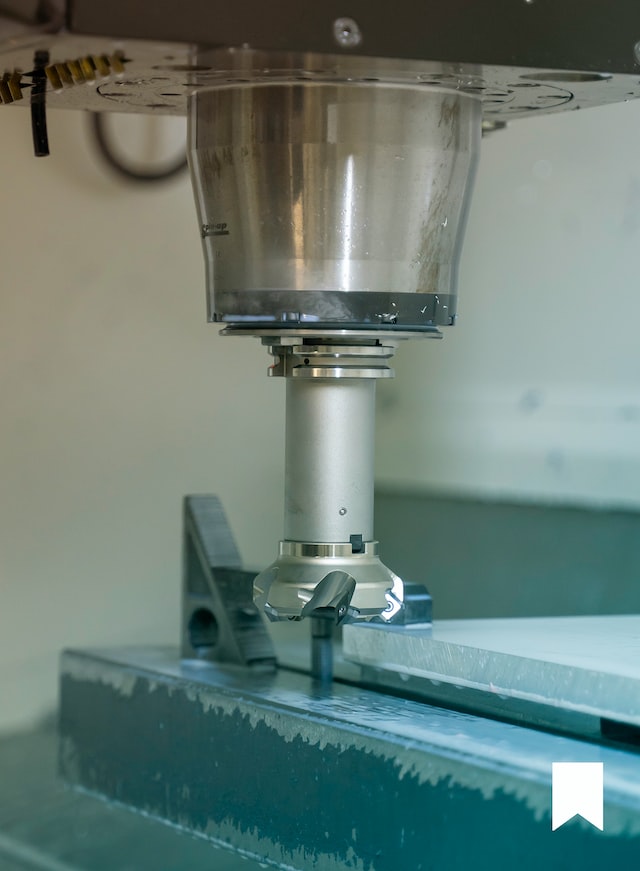
Milling is a machining process that involves the use of a milling machine to remove material from a workpiece in order to create a desired shape or finish. This process is used in a wide range of industries, from manufacturing and construction to automotive and aerospace, and is an essential tool for any machinist or engineer. In this blog post, we will explore the basics of milling, including the different types of milling machines, how the process works, and the tools and accessories needed to achieve success.
What is Milling?
Milling is a subtractive manufacturing process that involves the use of a rotating cutting tool to remove material from a workpiece. This can be done in a variety of ways, including using a milling machine, a router, or a lathe. The cutting tool is typically a multi-point tool, such as a milling cutter or a drill bit, and is moved in a linear or rotary motion to remove material from the workpiece.
Types of Milling Machines
There are several types of milling machines, each with its own unique features and capabilities. Some of the most common types include:
- Vertical milling machines: These machines have a vertical spindle and a table that moves up and down to allow for the cutting tool to move in a vertical direction.
- Horizontal milling machines: These machines have a horizontal spindle and a table that moves left and right to allow for the cutting tool to move in a horizontal direction.
- Universal milling machines: These machines can be used for both vertical and horizontal milling, and can also be used for drilling and boring.
How Milling Works
The basic principle behind milling is to use a cutting tool to remove material from a workpiece in order to create a desired shape or finish. The cutting tool is typically a multi-point tool, such as a milling cutter or a drill bit, and is moved in a linear or rotary motion to remove material from the workpiece. The workpiece is typically held in place by a clamp or vice, and is moved in a linear or rotary motion to allow for the cutting tool to move over the surface of the workpiece.
Milling Tools and Accessories
To achieve success with milling, it is important to have the right tools and accessories. Some of the most important tools and accessories include:
- Milling cutters: These are the cutting tools used to remove material from the workpiece. They come in a variety of shapes and sizes and are typically made of high-speed steel or carbide.
- End mills: These are specialized milling cutters that are used for drilling and boring. They have a cutting edge at the end of the tool and can be used to create a variety of hole sizes and shapes.
- Clamps and vices: These are used to hold the workpiece in place while it is being machined.
- Coolant: Coolant is used to lubricate and cool the cutting tool and workpiece, which helps to improve the quality of the finished product and prolong the life of the tools.
Tips for Successful Milling
To achieve success with milling, it is important to follow a few key tips:
- Use the right cutting tool for the job: Different types of cutting tools are better suited for different types of materials and applications. Be sure to use the right tool for the job to achieve the best results.
- Use the right speed and feed rate: The speed and feed rate of the cutting tool will affect the quality of the finished product. Be sure to use the right speed and feed rate for the material and application you are working on to achieve the best results.
- Use proper clamping and fixturing: Proper clamping and fixturing will help to hold the workpiece in place and reduce vibration during machining, which can help to improve the quality of the finished product.
- Keep the cutting tool sharp: A sharp cutting tool will produce a better quality finish and last longer than a dull one. Be sure to sharpen or replace the cutting tool as needed.
- Use coolant: Coolant can help to lubricate and cool the cutting tool and workpiece, which can help to improve the quality of the finished product and prolong the life of the tools.
Common Milling Applications
Machine milling is used in a wide range of industries and applications, including:
- Manufacturing: Milling is commonly used in manufacturing to create parts and components for a variety of products, such as automotive, aerospace, and medical devices.
- Construction: Milling is often used in construction to create smooth surfaces on roadways and other surfaces.
- Machining: Milling is used in the machining of metals, plastics, and other materials to create a wide range of parts and components.
Conclusion
Milling is a versatile and essential machining process that is used in a wide range of industries and applications. By understanding the basics of milling, including the different types of milling machines, how the process works, and the tools and accessories needed to achieve success, you can master the art of machining and creating high-quality parts and components. With the right tools and accessories and a little practice, you can become a skilled machinist and produce parts that are precise and accurate.